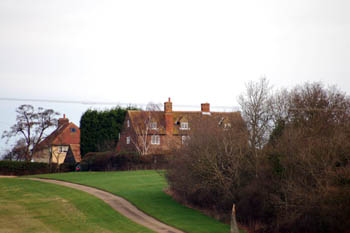The Community of Stanford In General

Stanfordbury January 2008
Landscape
Stanford is on the so-called Stanford-Broom Plateau.Most of the village lies between 130 and 150 feet above sea level. The Green Man, for example, is at about 145 feet and the site of the Crown about 135 feet. Stanfordbury is much higher at 225 feet above sea-level.
The solid, or underlying, geology is a type of greensand called Woburn Sands Formation. This sandstone was laid down in warm, shallow Jurassic seas between 99 and 121 million years ago. There is a band of mudstone called Gault Formation, laid down around the same time, immediately west of the village and more of it lies beneath Stanfordbury.
Superficial geology lies above the solid geology and has been laid down in the last two million years or so. Much of Stanford sits on top of a layer of glaciofluvial deposit, sand and gravel laid down by glaciers during the mid-Pleistocene Epoch. Immediately to the west, on top of the gault is a layer of river terrace deposit, a mixture of sand, gravel, clay and silt. Stanfordbury sits on top of glacial till.
Name
Stanford was first recorded in the Domesday Book of 1086 by its modern name. Other variants include: Stamford (1202-1377); Staunford (1227-1346) and Standford (1535). The name means "stony ford".
Administrative History
Stanford is a hamlet in the ancient parish of Southill in the Hundred of Wixamtree. It lies on the south-eastern boundary of the parish, just north of Shefford.
Population
Altogether the lands in Stanford recorded in the Domesday Book of 1086 contained 20 or 22 vilagers, 3 smallholders and 4 slaves. This total of 27 or 29 must be multiplied by at least four to get a full total including dependents - suggesting that something over a hundred people lived in Stanford in 1086, considerably more than the number living in some major parishes which are, today, considerably more populous than Stanford.